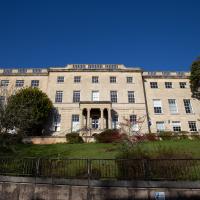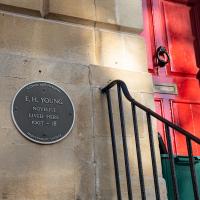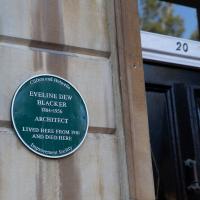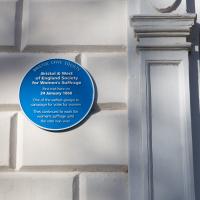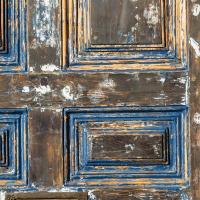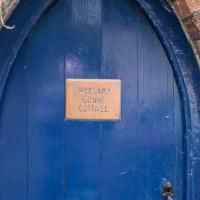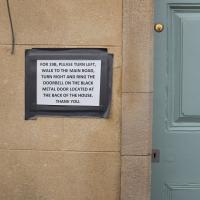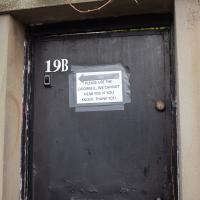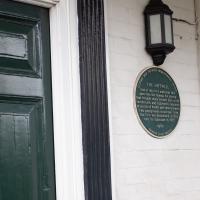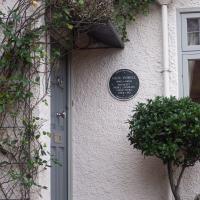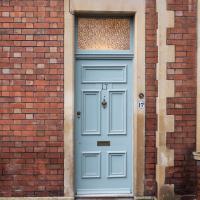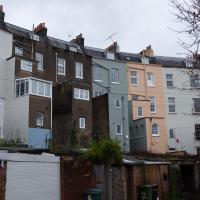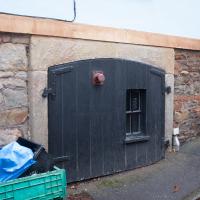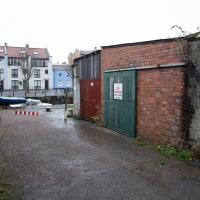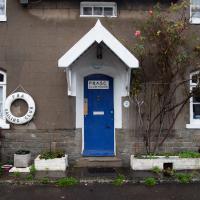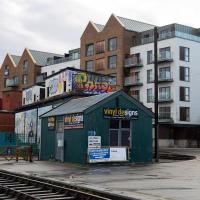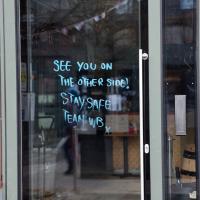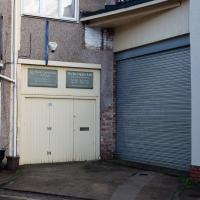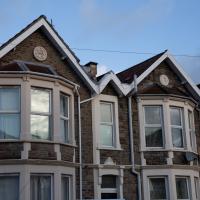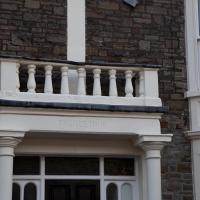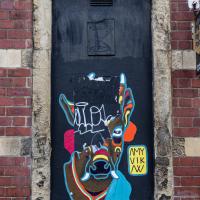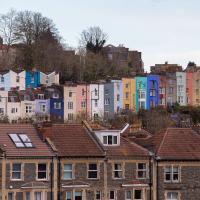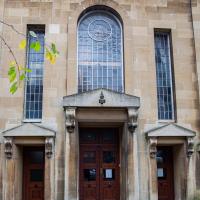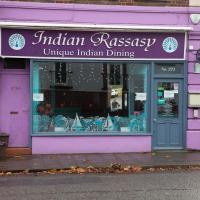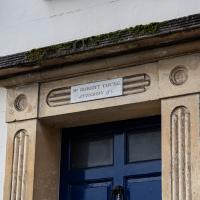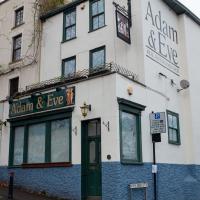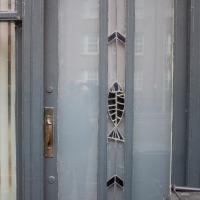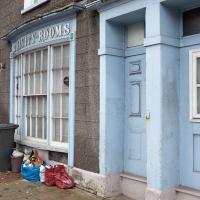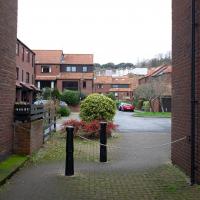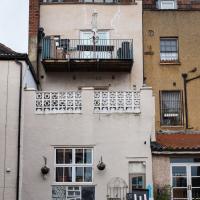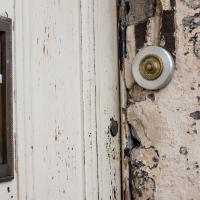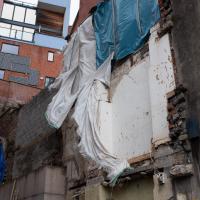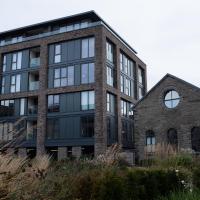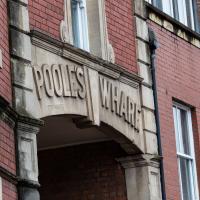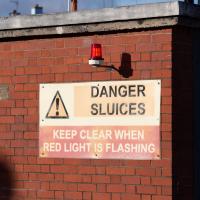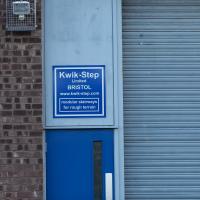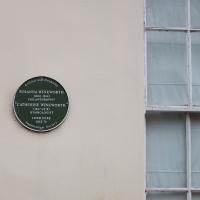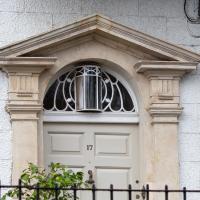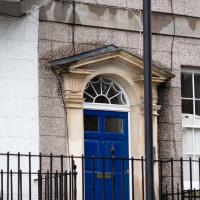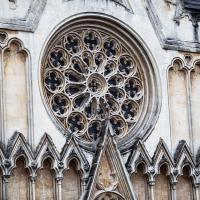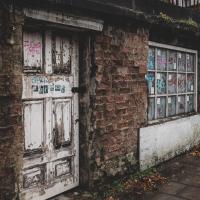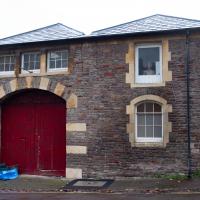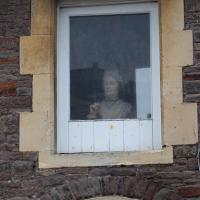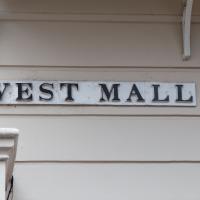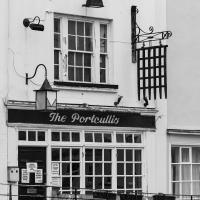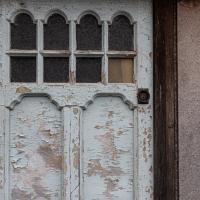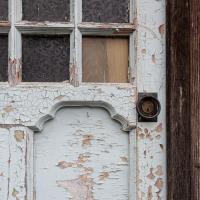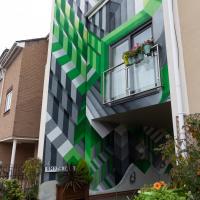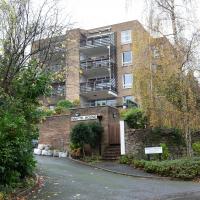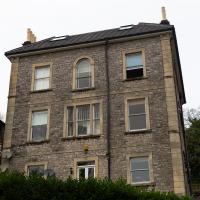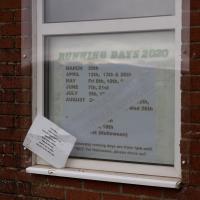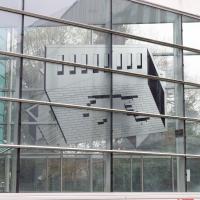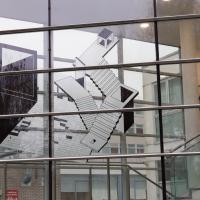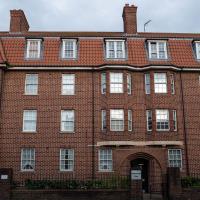Tagged: fixture
Clifton Village: Jesus and the Tympanum
12 Nov 2020
My goal is walk down every public road within a mile of me; sometimes it's not easy to tell what's public. I've passed the turning for Cornwallis Grove a thousand times, but never had a reason to venture down it, and although the street signs at the end seem to be council-deployed and I didn't spot any "private" signs, it's a gated road and definitely feels private.
Gathering all the white middle-class privilege I could muster, I wandered down and was rewarded with the sight of a Victorian pump, a statue of Jesus, and from the end of the road, a view of a private garden that once belonged to a private girls' school.
The Cornwallis House history page says:
In the early 20th century the house, together with Grove House, became a Catholic school, St Joseph’s High School for Girls.
The Congregation of La Retraite took over the school in 1924, with the nuns living in Grove House while the schoolrooms were
in Cornwallis House. The headmistress was Mother St Paul de la Croix (Sister Paula Yerby). By the 1970s La Retraite High
School had around 700 pupils.It closed in 1982 and the building was bought by Pearce Homes Ltd (now part of Crest Nicholson) who developed it into 21
flats. Grove House next door was bought by the Bristol Cancer Help Centre, and was later converted into flats in 2007.
According to the history page on its website, it's been everything from the private residence of the wealthy nephew of a shipping agent who had a hand in the slave trade, to a Protestant nunnery and a Catholic school, St Joseph’s High School for Girls. It's now residential.
Inspired by this plaque, I'm now (a couple of months later) about a third of the way through EH Young's Chatterton Square, set in a fictionalised Clifton called Upper Radstowe, whose eponymous square is based on Canynge Square.
Hotwells and Clifton/Clifton Village
14 Nov 2020
A local walk with my friend Lisa in tow, including a coffee from the cafe in the Clifton Observatory, where I have fond memories of experiencing my first camera obscura, and cake from Twelve in Clifton Village, one of my favourite recent finds for both food and flat whites.
Awarded the prize, apparently, "for his development of the photographic method of studying nuclear processes and for the resulting discovery of the pion." So a fellow photographer, I suppose. I tend to favour larger targets, though.
Sunday Morning
15 Nov 2020
My friend Sarah mentioned the high tide and I managed to drag myself out early, though still a little late. We nearly drowned in torrential rain, but the weather changed quickly and we ended up walking over to Bedminster in sunshine.
Does it say "Tremlethoe"? If it does, I have no idea what it means, and neither does Google. Sounds like a Cornish fishing village. It was the odd balustrade that caught my attention.
Sunday Afternoon
15 Nov 2020
A walk back from Bedminster to my place, mostly down Duckmoor Road, which I found a little dull—probably because it reminded me a little of the suburbs I grew up in on the outskirts of London—then held up slightly by some filming on Ashton Avenue Bridge. They were trying not to let the crowds build up too much in between takes, it seems, so it wasn't a long delay.
Dowry Square Jaunt
16 Nov 2020
A quick lunchtime jaunt to Dowry Square, which is very close to me but, being effectively a cul-de-sac as well as a square, I've probably only circumnavigated a couple of times in the last couple of decades.
As I said in another photo, I've not been in here since it changed from being a Persian restaurant called Shiraz. I hear it's very good, but I didn't even spend much time in restaurants in the Beforetimes. You can see me in the reflection there, so I suppose this is technically a selfie :)
I wonder what else he did? Dowry Square was very popular with the medical profession, which sprung up around the hot well, mostly because of all the poor buggers dying of varous ailments who came along to be cured by drinking mildly contaminated hot water.
Jaunt to a Closed Coffee Shop
17 Nov 2020
A fruitless wander, as Spoke and Stringer (who I thought might do a decent flat white) were closed, and the only other harbourside inlet offering were a bit too busy to wait at, especially as I'd spent some time wandering some of the convolutions of Rownham Mead. This last congeries of dull alleyways and brown-painted garages was at least somewhere I've never been before, in parts.
There are yet more plans to turn this pub into yet more flats. I heard from a few different people that the owner has a habit of renting it to people but making them responsible for repairs, which normally turns out to be a bad deal for them as the place is falling apart. Of course, I've only heard that side of the story from the renters. I've experienced it in a few different forms, and in some of them it was a truly excellent local pub.
Up until the owner retired a few years ago, this was one of those great combination Chinese/fish & chip takeaway places, and I used to enjoy everything from the crispy chilli beef to the cod & chips.
From what I can see in the National Archives, the Trinity Rooms was owned by Holy Trinity Church, which makes sense. I don't know what it's curently used for, though my guess would be that it was sold off and has been turned into flats.
I hope Romany and Chaz are doing okay. I had cakes here as part of my 40th birthday celebrations, followed by a cruise in the Bristol Packet boat Bagheera.
It doesn't enjoy the best of reputations among the nearby residents, especially on Nextdoor, but the couple of times I've been in it seemed like a perfectly servicable cheap boozer with a loyal clientele.
...which is also the name of the new hipster coffee place around the corner. Or am I bluffing?
Someone clearly decided that the best way of renovating that ramshackle old house on the Hotwell Road was to pull the thing out completely and start from scratch. They were probably right.
Quick Coffee
19 Nov 2020
A sunny day, and though I should have probably headed for less well-travelled territory I just headed over to the Marina to grab a flat white from Imagine That's horsebox café.
What, should I keep clear from this side? I'm assuming that this doesn't actually affect anything on dry land...
Clifton Village Mini Wander
20 Nov 2020
Just a quick wander up the hill to get a flat white from Twelve. I really enjoyed the spooky mannequin (?) in the window.
I'm not sure what's going on in this fanlight on Richmond Terrace. Maybe it's space for a lamp?
This frontage on Queens Road, just down from where Twentiety Century Flicks used to be housed, has always looked run-down, and it's only getting worse.
I mentioned to Christopher Fowler that I'd always thought this pub sign would be a good murder weapon for one of the Bryant and May books, but of course he mostly deals in London, not Bristol.
Bedmo and Ashton Court
21 Nov 2020
A rather more wide-ranging weekend wander with Sarah and Vik, taking in some mock Tudor bits of Bedmo (I should note that I've subsequently been corrected to "Bemmie", but I'm an outsider and have been calling it "Bedmo" for short for decades...), a chunk of Ashton, a path up Rownham Hill called Dead Badger's Bottom(!), The Ashton Court estate, a bit of the UWE campus at Bower Ashton, and some of the Festival Way path.
I often walk through Greville Smyth park, and there's many other things in Bristol bearing the Smyth name. John Henry Greville Smyth was...
...an English naturalist and collector of natural history specimens. He is best known for his large private collection of mammals, birds, and insects kept at his stately home of Ashton Court in Bristol. On his death his wife, Lady Emily Greville Smyth, donated the bulk of the collection to the Bristol Natural History Museum, now known as Bristol Museum and Art Gallery.
But the Smyth name in general is all over this bit of Bristol, from Greviille Smyth Park outwards, which is hardly surprising given that the Smyth family home was Ashton Court, where four hundred years' worth of Smyths resided after Sir Thomas Arundel sold the place to a John Smyth in 1545, a few years after being gifted it by Henry VIII.
I have no idea how anyone managed to smack this street furniture so hard, or what direction they came from to do it. It's a pretty straight 30mph road right there, and this is only one side of the dual carriageway. Never seen so much as a near-miss there.
